How to Calculate and Increase Customer Lifetime Value (LTV) in Mobile Marketing
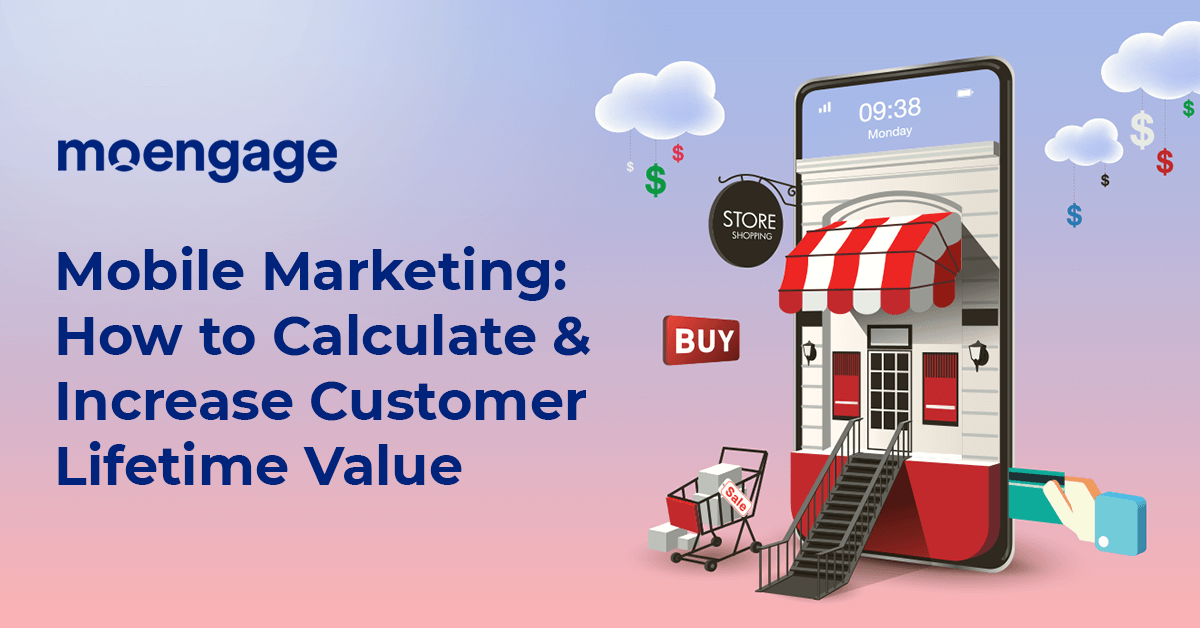
Reading Time: 7 minutes
With over 2 million apps available in the App Store, it’s difficult to gain new customers through mobile channels. As such, when trying to increase mobile marketing revenues, you’re often better off focusing on customer lifetime value (LTV).
The trouble is, LTV is a little more complicated in the world of mobile marketing. One would say that the lifetime value of a customer in, say, e-commerce is simple to work out. It’s essentially just the total amount of stuff that a person buys over his association with the brand. However, with varying platforms and digital channels, calculating it might become complex.
| Bonus Content
👉 Customer Lifecycle Marketing Campaigns: An In-depth Guide [Ebook] |
Today, we’ll look at what makes up mobile LTV and how to calculate this. Then, we’ll look at three concrete strategies you can use to start boosting the lifetime value of your mobile users.
So, first things first.
What is Customer Lifetime Value (LTV) for Mobile
At a basic level, mobile LTV is still the amount of money each customer brings in. The difficulty stems from the fact that mobile customers bring in money in a number of different ways.
Besides simply buying stuff, mobile users can click and pay from display advertising, subscriptions, and in-app purchases, to name but a few. Some of these are ongoing revenue; with others, the user creates more revenue for brands the more they use the app.
Take into account the fact that mobile users are more likely to refer their friends, and things get confusing too fast. To make better sense of all of this, there are three important variables you need to worry about:
- Monetization
- Retention
- Virality
Let’s look at each in a little more detail.
Monetization
In E-commerce, LTV is mostly concerned with order values. With mobile apps, LTV is the sum of the total value a user can generate through all of the different ways that your tool brings in money from users.
However, for the purposes of calculating LTV, you don’t need separate figures for these. Instead, we’ll use what’s known as average revenue per user (ARPU). That is, the average amount of revenue each user generates.

There is often a correlation between how often a person uses an application that the ARPU. This is not always the case and will depend on the revenue model.
Retention
Retention is the proportion of your users who keep using your app. Normally when someone downloads an app, they’ll use it for a couple of days before moving on to something else. This is essentially the opposite of your churn rate.
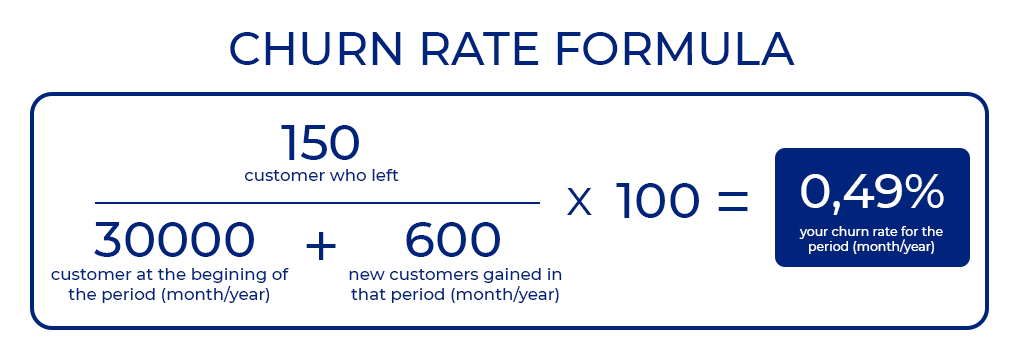
The patterns formed by different users here make up the user lifecycle. Your goal is to promote ongoing usage. The longer you can retain your users, the higher their lifetime value. Click here to find some ways to improve retention.
Virality
Finally, virality can be thought of as the number of users each person gets to subscribe during their usage cycle. Unsurprisingly given the name, this works the exact same way as the reproduction rate of a virus.
This can be expressed as a decimal. If one person refers to one other user on average, the referral rate is 1.0. A referral rate of 0.5 means that on average every other user refers a friend.
If the average user refers to one or more people, your audience will grow exponentially. If on average, user referrals are less than one, your audience will stagnate unless you can make up numbers elsewhere.
One way you can measure virality is through your Net Promoter Score (NPS). NPS is widely used to measure customer experience and business growth.
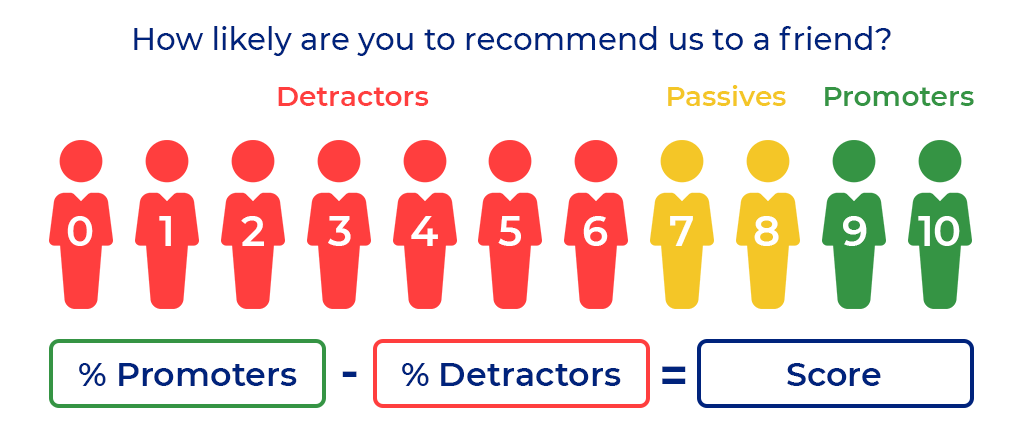
How to Calculate Lifetime Value of Mobile Customers
That’s the theory behind mobile lifetime value. However, if you want a strong business development plan, you’ll need to know how to accurately calculate your LTV. That is, how do monetization, retention, and virality actually interact?
Luckily, there’s a way to work this out. You start by multiplying the average amount of revenue each user brings in by the amount of time they stick around. Then you add the extra value they bring in from referrals.
This can be expressed by the following formula:

Note that this is the average lifetime value of your mobile users. The same formula wouldn’t work for calculating the precise LTV of other users.
Now that we know how to calculate LTV, we can start to use this figure to start boosting the average value of each customer.
How to Increase Customer Lifetime Value
If mobile LTV is made up of three variables, it makes sense that you have three levers to pull to boost user value. Indeed, you have a number of options to increase LTV. Essentially, though, these work by increasing one of monetization, retention, or virality.
A starting point for this exercise is customer journey mapping. This will help you understand what actions your users take before installing your app and what actions might make them uninstall the app.
Following on from this, you should review actions you could take that would improve each of the variables that make up mobile lifetime customer value. Each of these is immediately actionable and will also lead to higher LTVs straight off the bat.
Here goes.
Retention: Improve Onboarding
To improve retention, it’s worth considering why people delete apps. So, what are the most common reasons for app churn? The most basic is that they are simply not using it or not getting the value they thought they would when they downloaded the app.
On top of that, many people delete apps before they even start using it, especially when the sign-up process is too long or complicated. If that is happening, it is a waste of your user acquisition efforts.
The solution to both of these problems is the same: better onboarding.
The perfect onboarding experience has two ingredients:
- It should educate the user about essential features
- It should ask as little of the user as possible
In practice, this means providing a simple but valuable customer experience during onboarding. Luckily, there are a couple of easy rules of thumb you can follow to ensure this, including:
- Keep data fields to an absolute minimum
- Verify data before the user submits so that if they make a mistake, they don’t have to start over again.
- Show off features without bombarding the customers. Give each key feature its own dedicated screen.
- Use animations to engage customers
- Continually test and improve your onboarding process
It will take a lot of testing to perfect your onboarding. When looking for inspiration, review the most successful apps in your niche. For example, the onboarding sequence to collect a user’s details used by an App like Instagram has probably been tweaked and tested by hundreds of developers.
You can save a lot of testing time by imitating your peers. That’s not to say you should copy everything but certainly borrow the best bits.
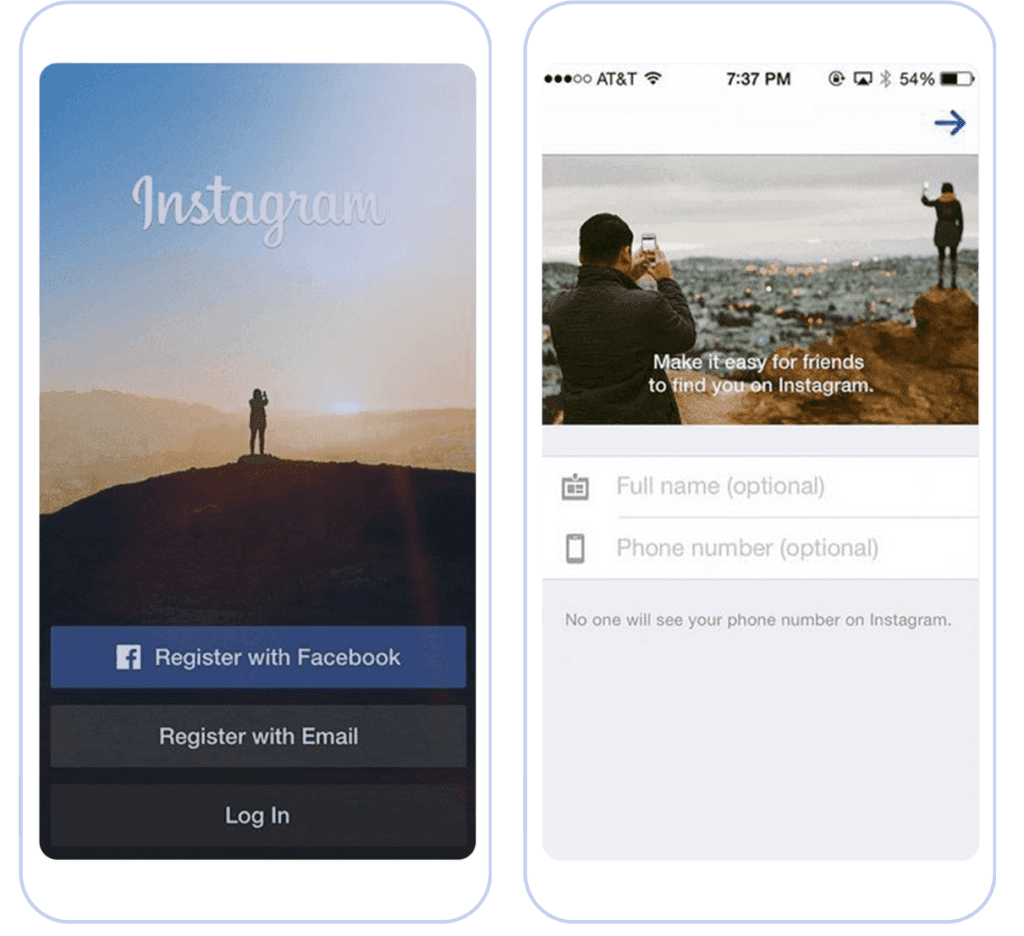
Virality – Encourage Social Sharing
As your existing users start to see more value in your app, your virality will naturally increase, at least to some extent. After all, when people enjoy doing something, they tell their friends. On top of that, we’re more likely to listen to our peers’ recommendations than marketing spiel.
However, this doesn’t mean you should get lazy.
Indeed, there are plenty of other tools at your disposal to push up your virality. The best of these is social media. In fact, one of the easiest ways to increase LTV by boosting virality is to encourage users to share your app online.
The first step to this is making social shares easy. That is, your app should be designed to allow users to do this with the least possible effort.
What’s more difficult is incentivizing users to share. A certain number of people will do this without any push, but most people need something in return. One way to achieve this is to offer in-app bonuses, like credits, whenever a user refers a friend through social media.
Similarly, you can create competitions. Users can be entered into a draw to win prizes by sharing your app online.
Monetization – Use Better Push Notifications
No matter how you monetize your app, the best way to increase revenues is to nail your push notification strategy. When done right, this makes each user spend more time on your app, therefore bringing in more cash through display ads.
Push notifications can also increase revenue by making customers aware of offers and promotions. For example, TripAdvisor sends personalized messages to users based on the places they were viewing. It’s a logical approach to improving engagement, which can lead to an increase in LTV.
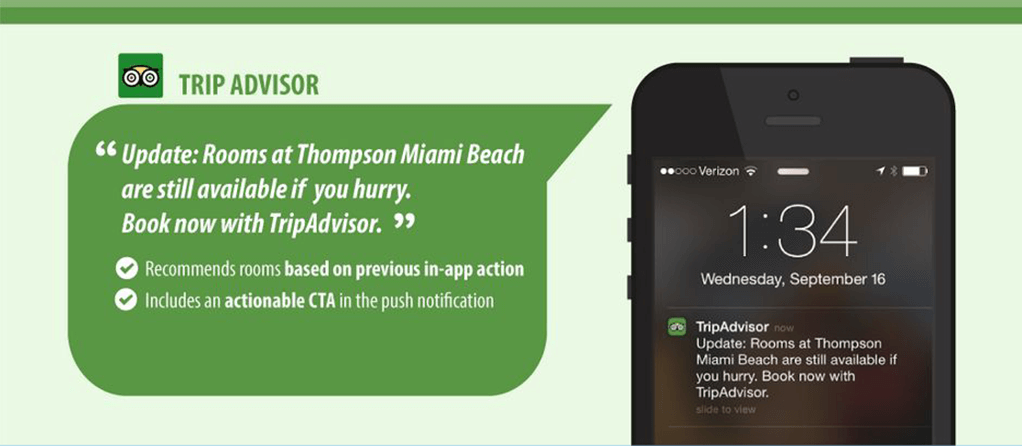
However, when done badly, push notifications can also lead to higher churn rates, so it’s crucial that you know what you’re doing. When it comes to deciding the frequency of push notifications, you must experiment and find your sweet spot.
But not all push notifications are alike. Generic push notifications might have a negative impact on your user base. Targeted or personalised messages are more likely to improve your monetization rate by encouraging usage.
The basic principle at the core of all of this is that push notifications should be used to provide extra value to your audience. People aren’t stupid. If users think you’re simply harassing them to make more money, they’ll delete your app in droves.
Conclusion
Having a clear picture of your lifetime customer value is essential. It is perhaps the best indicator of the success of your business. It’s also one of the most commonly ignored success metrics.
In the context of mobile marketing, LTV boils down to three key components. These are the amount of money each customer brings in, how long each user keeps your app installed, and how many friends each user refers to the app.
These variables can be used to calculate your LTV, but they can also be used to diagnose problems. With this information, you can then take targeted steps to address these problems by improving the value of each of the variables.
Here’s What you Should Do Next
|






